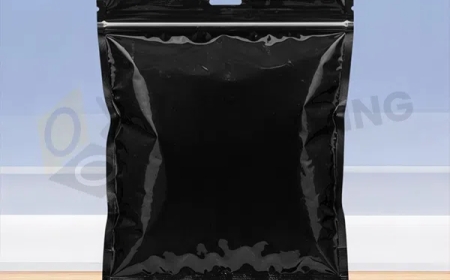Future-Proofing Your Business Through Material Innovation in Construction
Discover how material innovation is shaping the future of construction. Learn how future-proofing your business through advanced materials can drive sustainability, resilience, and long-term success.
In an enterprise as dynamic as creation, staying in advance calls for more than simply adopting new gear or strategiesit needs an attitude focused on adaptability and innovation. As the era hastens and environmental issues mount, businesses are increasingly in search of methods to construct smarter, longer-lasting, and greener structures. This has brought about a developing attention on future-proofing creation practices, mainly via the lens of fabric innovation.Whether you are a developer, contractor, architect, or investor, it's becoming clear that Material Innovation is Transforming Construction in approaches that move beyond aesthetics or value savings.
Understanding the Evolution of Construction Materials
Traditional building materialslike concrete, metallic, and woodenhave long formed the inspiration of construction. But these days demands require materials which could do more than simply hold up walls. Innovation has led to the improvement of composite materials, engineered timber, self-restoration concrete, and other advanced options that supply greater power, adaptability, and environmental performance.These new substances are a response to both technological development and rising pressures inside the enterprise. From weather issues to urban density, every assignment now requires extra consideration of material selection. The companies which can be actively exploring those alternatives are frequently those leading the rate in current infrastructure and green building layout.
Sustainability: A Core Driver of Change
A most important pressure at the back of this evolution is sustainability. As international regulations tighten and customer awareness grows, the development sector faces increasing scrutiny over its environmental footprint. In reaction, eco-friendly materialslike hempcrete, bamboo, and recycled compositesare gaining recognition for their low carbon emissions and renewability.These substances dont simply benefit the planet; in addition, they offer long-term financial benefits. Structures constructed with sustainable materials regularly require much less upkeep, enjoy decreased strength intake, and are better positioned for environmental certifications. This appeals to clients searching out smart investments, at the same time as also aligning groups with ESG (Environmental, Social, and Governance) dreams.
Resilience and Performance in a Changing Climate
In an international environment in which excessive weather and natural screw ups are becoming more frequent, resilience is not an advantageit's crucial. Innovative materials now help buildings face up to floods, fires, earthquakes, and temperature swings higher than ever earlier than. High-performance glass, fire-resistant cladding, and bendy structural factors are only a few examples of ways innovation improves safety and durability.These alternatives additionally enhance strength efficiency. Consider substances that insulate more efficiently, mirror warmth, or self-adjust to environmental conditions. By improving a constructions performance in each season, those innovations result in working expenses and improve occupant comfort, important priorities for each owner and tenant.
Smart Materials: The Future of Functionality
Material innovation isnt just about electricity and sustainabilityits additionally approximately intelligence. Smart materials are designed to react to outside stimuli, together as temperature, stress, or moisture. Thermochromic glass, as instance, can tint itself based on sunlight exposure, decreasing glare and air conditioning needs.These technologies, whilst integrated with IoT structures and Building Information Modelling (BIM), offer real-time insights into structural fitness and energy usage. Over time, this allows predictive maintenance, lowering the danger of sudden breakdowns and downtime. For agencies, that translates into higher planning, fewer surprises, and in the long run, stronger backside lines.
Overcoming Barriers to Innovation
Despite the clean benefits, adopting new substances isnt always trustworthy. Many organizations are hesitant to transport far from familiar practices due to concerns approximately cost, availability, or lack of technical expertise. In other cases, local construction codes and delivery chain barriers create similarly demanding situations.However, these hurdles may be addressed. Pilot initiatives, manufacturer collaborations, and industry case research are supporting demystify the transition manner..
The Business Case for Material Innovation
Heres where the idea of Future-Proofing Your Business will become specifically applicable. In todays marketplace, customers, investors, and even tenants are more and more comparing agencies based on long-term vision, imaginative and prescient and adaptability. Businesses that put money into superior materials now not simplest advantage from on-the-spot efficiencies but also signal to stakeholders that theyre prepared for whats next.Whether its assembly net-zero goals, attracting environmentally aware customers, or ensuring resilience in opposition to future disruptions, material innovation can function as a competitive edge. Its no longer approximately chasing traitsits approximately making strategic choices that align with destiny expectations and evolving marketplace desires.
Real-World Examples: Innovation in Action
From skyscrapers to facilities, fabric innovation is being applied in projects across the globe. Consider using go-laminated timber (CLT) in high-upward thrust homes, combining renewable sources with architectural beauty. Or take graphene-infused concrete, which gives massively stepped-up strength and lifespan over conventional mixes.These packages reveal that destiny-proofing isnt just an ideaits a growing movement backed by consequences. By learning from those pioneers, corporations can undertake demonstrated strategies and keep away from commonplace pitfalls.
Conclusion: Building Tomorrow, Starting Today
Construction has usually been greater than erecting systemsits approximately shaping the future. And in an age of rapid exchange, the materials we choose are critical to how prepared we are for what lies ahead.Future-proofing your business through material innovation isnt just a clever move; its a vital method for sustainable achievement. By embracing new technologies, rethinking cloth picks, and aligning with worldwide trends, organizations can role themselves at the vanguard of an extra resilient and accountable enterprise.































